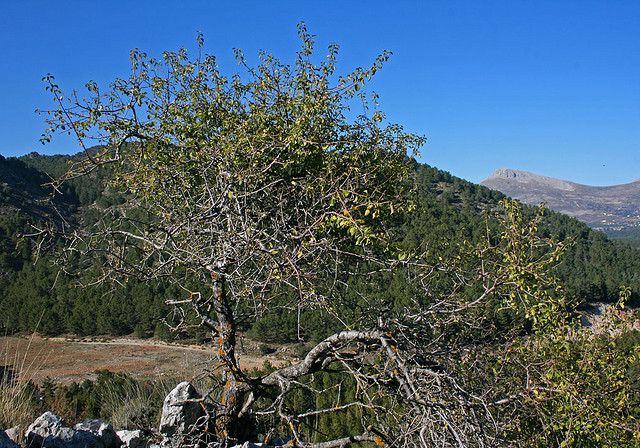-
 Eyepiece
Eyepiece
-
 OSPAR Convention
OSPAR Convention
-
 Nasal drip
Nasal drip
-
 Erythematous
Erythematous
-
 Arable land
Arable land
-
 Peridural
Peridural
-
 Water
Water
-
 Fertilisation
Fertilisation
-
 Axon
Axon
-
 Realism
Realism
-
 Percutaneous
Percutaneous
-
 Amorphous
Amorphous
-
 El Niño
El Niño
-
 Widget
Widget
-
 Weak key
Weak key
-
 Mamavirus
Mamavirus
-
 Inclination
Inclination
-
 Sequella
Sequella
-
 Serine
Serine
-
 Complication
Complication
-
 Ornithology
Ornithology
-
 Ocellus
Ocellus
-
 Rhizome
Rhizome
-
 Confocal microscope
Confocal microscope
-
 Subsidence
Subsidence
-
 Earth
Earth
-
 Peach
Peach
-
 Dry ice
Dry ice
-
 Perigee
Perigee
-
 Hydra
Hydra
St Lucie cherry
The St Lucie cherry is a fragrant shrub which grows to heights of between 3 and 12 m.

Prunus mahaleb. © fturmog, Flickr CC by nc-sa 2.0
Names
The St Lucie cherry (Prunus mahaleb), is a member of the Rosaceae family and is also called the "rock cherry" and the "Mahaleb cherry".
Botanical description of the St Lucie cherry
This shrub has twisted and very spread out branches. Its bark is quite shiny and is grey-brown. Its deciduous leaves, with a limb as wide as it is long, are more or less tough. Finely dentate, they are bright green on their upper face. Note the presence of green nectariferous glands on their petiole. Its flowers are small, in an erect corymb, a little wavy at the base and have a delicate fragrance. They blossom in April - May. In July, this species is covered with many small fruit, black drupes, with an acid and bitter taste that birds> enjoy.

St Lucie cherry, a member of the Rosaceae family. © Manuel M. Ramos, Flickr CC by nc-sa 2.0
Origins
This species grows throughout most of France, but not in the west. Its name comes from St Lucie abbey in the Lorraine region, where it has always grown abundantly. It particularly prefers to grow on hills and low mountains.
Growing conditions of the St Lucie cherry
The St Lucie cherry is not very fussy and can grow without problems in difficult areas, even in rocks or on cliffs.
Use
 St Lucie cherry. © Manuel M. Ramos, Flickr CC by nc-sa 2.0
St Lucie cherry. © Manuel M. Ramos, Flickr CC by nc-sa 2.0
Latest
Fill out my online form.



